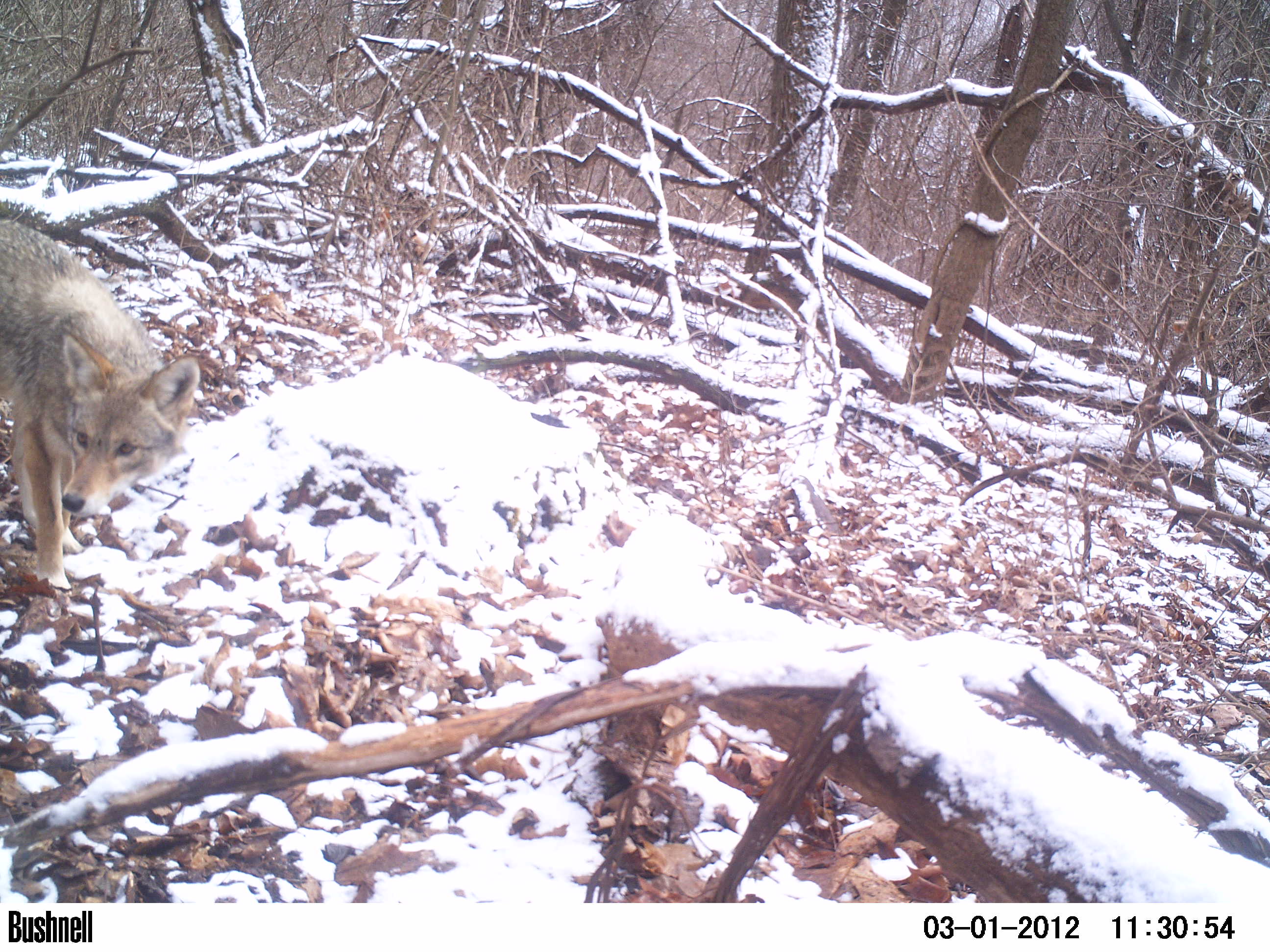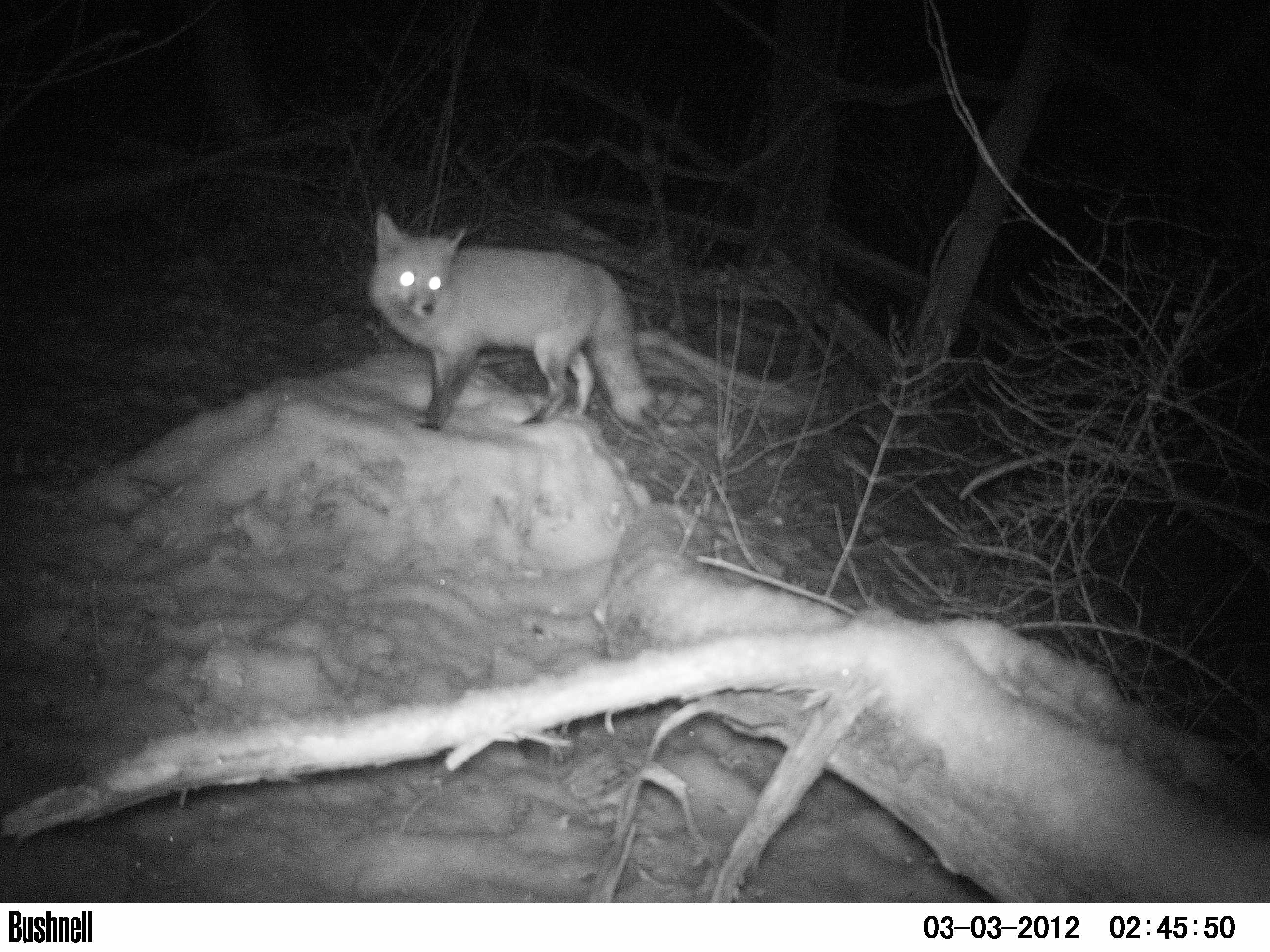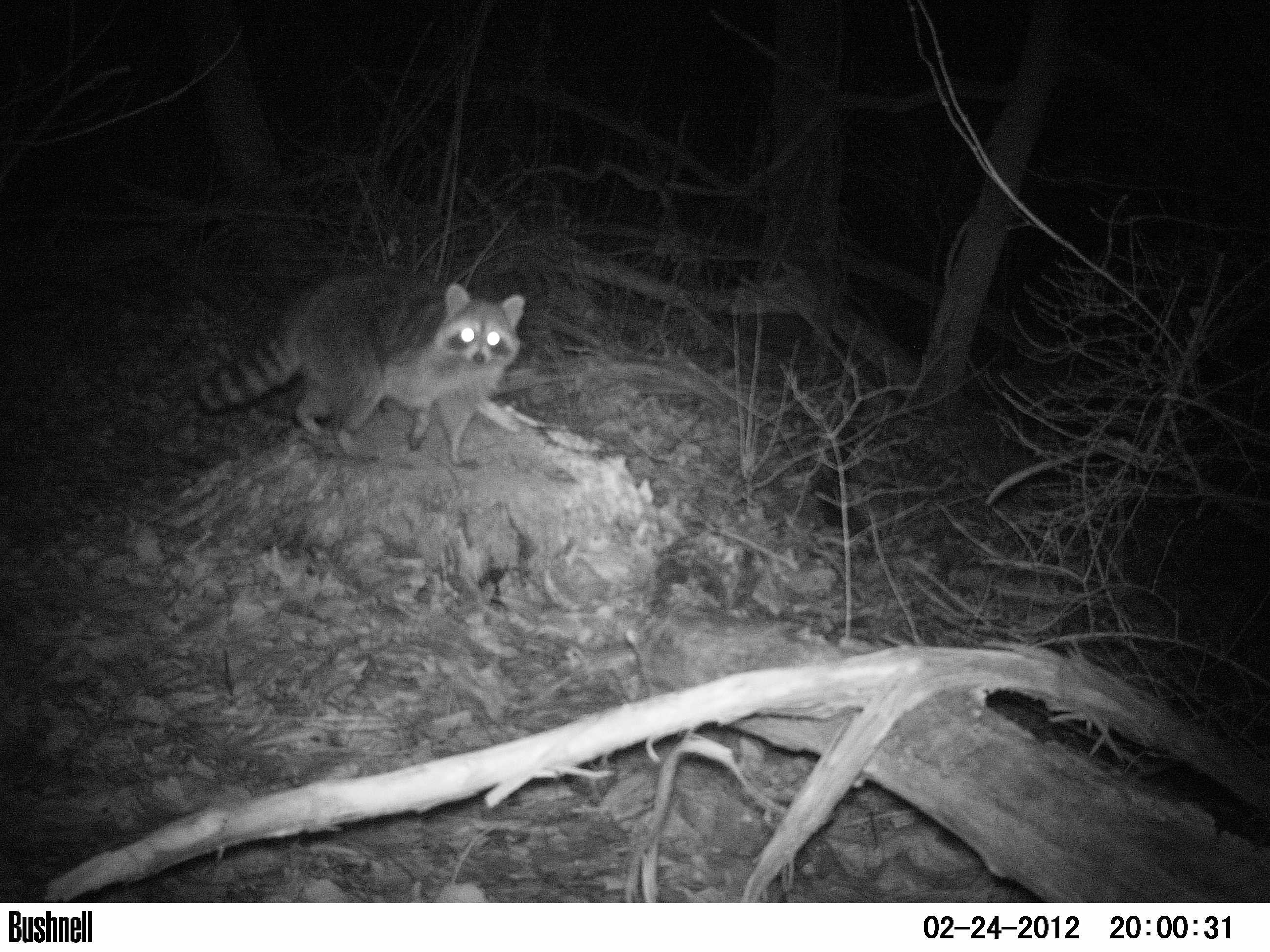How To Attract Coyotes and Foxes To Your Trail Camera
Bait or Scents - The Easiest Way to Attract Predators To Trail Camera
(Be sure to check your local laws to make sure that this is legal in your area).
Coyotes will come in to a variety of foods including dog food, fruit such as apples, and more. Even though they are predators they still eat a variety of food. A gut pile from a fresh deer kill or roadkill would be a good opportunity if you come across it.
Scents like coyote or fox urine are a great way to entice a predator that is in your area to step in front of your trail camera. Scents or attractants can be found online or at your local sporting goods store. The Wildlife Research Center's Coyote Urine was one of the scents I tested in the trail camera photos below.
I used scent to get this coyote to stop in front of my trail camera. See more photos from this camera at the end of this article.

The Other Way To Get Coyotes and Foxes on Your Trail Camera is To Place Your Camera In Areas They Frequent Often
The easiest way to do this is by walking your property in the winter when there is snow on the ground. This allows you to be sure you are placing your cameras in the best locations. Walk your property and set up cameras in locations that have lots of coyote and fox prints.
Learning more about the behavior of coyotes below will help you narrow down the areas of your property that you should search first.
Understanding The Behavior and Habits of Coyotes and Foxes
Coyotes and foxes are both members of the Canidae family and share some similar characteristics. However, they also have distinct behavior and habits that set them apart.
Coyotes:
- Coyotes are very adaptable and can be found in a wide range of habitats, including forests, grasslands, and even urban areas. They're likely in your area, whether you realize it or not.
- They are primarily nocturnal and are most active during dawn and dusk.
- Coyotes are known for their remarkable ability to hunt and are opportunistic feeders, consuming a variety of small animals, birds, and fruits.
- They are also social animals and live in family groups called packs, consisting of a monogamous breeding pair and their offspring.
- Coyotes have a diverse range of vocals, including howls, yips, and barks, which they use for both communication and to establish territory.
Foxes:
- Foxes are also found in a variety of habitats, including forests, grasslands, and urban areas.
- They are typically crepuscular, meaning they are most active during dawn and dusk.
- Foxes are opportunistic omnivores and have a diverse diet that includes small mammals, birds, insects, fruits, and vegetables.
- Unlike coyotes, foxes are solitary animals and prefer to live and hunt alone or in small family groups.
- They communicate using a range of vocalizations, including barks, screams, and howls.
Where To Find Coyotes And Foxes - Habitat Preferences
Both coyotes and foxes can be found in a variety of habitats, but they have some habitat preferences that differ.
Coyotes:
- Coyotes prefer open areas with ample cover such as grasslands, shrublands, and agricultural fields.
- They are also known to adapt to urban environments and can be found in suburban areas.
- Coyotes are less common in densely forested areas but can still be found there if prey is available.
Foxes:
- Foxes prefer a mix of wooded areas and open spaces such as meadows and fields.
- They are commonly found in areas with abundant cover, such as brushy hedgerows, forest edges, and thickets.
- Foxes are also known to adapt to urban environments and can be found in suburban areas.
Understanding the behavior and habitat preferences of coyotes and foxes can help us coexist with these beautiful and fascinating creatures. By respecting their space and taking measures to prevent conflicts, we can ensure the conservation of these important species.
Selecting the Perfect Location
Choosing the ideal location for placing your trail camera to attract coyotes and foxes
To attract coyotes and foxes with your trail camera, it is crucial to select the perfect location. Consider the following factors when choosing the ideal spot:
- Look for areas with abundant natural cover, such as dense vegetation, shrubs, or tree lines. These areas provide shelter and security for coyotes and foxes.
- Seek out locations near water sources, as these animals require water for survival. Creeks, rivers, ponds, or even small puddles can attract them.
- Identify areas with signs of coyote or fox activity, such as tracks, droppings, or burrows. These indicate that the animals frequent the area and are likely to visit again.
- Pay attention to transitional zones where different habitats meet, such as the edge of a forest or where fields and meadows merge. These areas offer a diverse range of resources for hunting and foraging.
- Consider setting up your trail camera near food sources, such as thickets where small mammals or birds may be abundant, or fruit trees that attract wildlife.
- Predators like to mark their territory. If there is a bush that is slightly taller or different from the rest of the grass in a field, this can be a great camera location for capturing footage of predators.
The Importance of Patience and Persistence in Attracting Predators To Your Trail Camera
When it comes to successfully capturing coyotes, foxes, and other predators on your trail camera, it's crucial to be patient and persistent. These animals can be wary of new objects in their environment, so it may take some time for them to become comfortable with the presence of your camera. Their natural habits can also result in them only traveling through specific areas once in a while. By following the additional tips and avoiding common mistakes mentioned earlier, you can increase your chances of attracting these elusive creatures and capturing valuable footage.
Choosing the right location, using scent attractants, setting up bait stations, adjusting camera settings, and being patient are all key factors in attracting coyotes and foxes to your trail camera. Additionally, it is important to review the footage regularly to identify patterns and behaviors. Adjust your trail camera setup as needed gather better photos or videos in the future.
More Images of Animals That Were Attracted By Scent

Night time fox image taken by a Bushnell Trophy Cam

